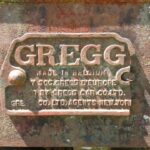
Lead Generation for Canadian Industry : The Inbound Marketing Strategy
October 9, 2025
Transforming Manufacturing through Winning Social Media Tactics
October 11, 2025Title: Achieve Wider Visibility: Practical SEO Tips for Architect Portfolios
An architect’s portfolio is a testament to creativity, meticulous planning, and precision. It showcases the best of their work, highlighting their prowess, versatility, and style. In today’s digital age, having a strong online presence is vital to creating the visibility needed to advance in the architectural field. Enhancing your portfolio for Search Engine Optimization (SEO) is the linchpin to online success. Here’s a closer look at the importance of SEO and practical tips to optimize your architect portfolio.
#1. Understanding the Value of SEO for an Architect’s Portfolio
In our internet-driven world, a considerable percentage of potential clients will probably chance upon your work through a search engine. This simple fact underlines the significance of SEO for architects. Strategic SEO practices enhance the visibility of your portfolio, ensuring it appears higher in search results, thereby attracting more traffic to your site. In essence, better SEO equals better visibility, propelling your work to a broader audience and increasing your opportunities for lucrative design projects.
#2. Keyword Integration for Wider Visibility
Keywords are fundamental when it comes to SEO. They are the phrases or terms that users enter into search engines when looking for specific information. Identifying relevant keywords and incorporating them within your site is a crucial tactic in comprehending SEO tactics.
For your architecture portfolio, consider keywords such as ‘architectural design’, ‘building design’, ‘landscape architecture’, or geographical keywords such as ‘architecture in [your location]’. Don’t flood your portfolio with these keywords, though. Use them sensibly and organically throughout your web copy, blog posts, project descriptions, and even image alt texts.
#3. Quality Content Matters
While keyword integration is vital, content remains king in the world of SEO. The quality and value of your content substantially affect your portfolio’s SEO ranking. Including interesting, informative, and original content on your site increases viewer engagement, fostering longer site visits, and ultimately improving your SEO ranking.
One idea to develop quality content is to run a blog discussing architectural trends, design philosophies, or case studies of your projects. Such content not only establishes you as a thought leader in your field but also paves the way for you to incorporate important keywords seamlessly.
#4. Image Optimization
As visuals are the mainstay in architecture, large, professional images are critical in an architect’s portfolio. However, these often-heavy files could burden your site’s load speed, thereby affecting your SEO rating. Optimizing these images entails compressing them without losing their quality.
Also, take advantage of the ‘Alt Text’ feature to give a detailed description of each image. This is another opportunity to integrate relevant keywords and make your portfolio more searchable.
#5. Mobile-Friendly Design
Given the predominance of mobile internet use today, your portfolio’s ability to adapt to various screen sizes significantly affects SEO. A mobile-responsive site also offers a better user experience, crucial in turning site visits into potential leads.
Understanding and applying these SEO basics to your architectural portfolio can seem daunting at first. However, by considering keywords, creating engaging content, optimizing your images, and ensuring a responsive design, your portfolio can turn into an effective tool in achieving wider visibility. In the end, the key is to implement these practices consistently, adjust strategies as algorithms evolve and to remember that SEO is a marathon, not a sprint. With patience and persistence, your portfolio will climb the ranks and reach the eyes of potential clients you might never have otherwise reached.
Case Study: Transforming John’s Web Portfolio Visibility via Effective SEO
John Doe, a seasoned architect, felt invisible in the digital world despite having a fantastic online portfolio showcasing his innovative designs. As beautiful as his online portfolio was, it was not attracting the visibility he desired. John’s unfortunate situation perfectly illustrates the growing need for SEO in architect portfolios. This compelling case study outlines how John integrated SEO principles into his architecture portfolio, achieving wider visibility and attracting clients worldwide.
Analyzing John’s Portfolio: The First Step
John sought advice from an SEO expert who began by analyzing his website. The expert discovered that John’s portfolio lacked proper SEO – there were no keywords integrated, all images lacked alt text, there was no meta description, and, notably, no backlinks. The expert explained that SEO is a practice of increasing the quantity and quality of traffic to your website through organic search engine results. By incorporating the right SEO practices, John’s architecture portfolio could rank higher in search engine results, consequently gaining wider visibility.
Identifying keywords for John’s Portfolio: Laying the Foundation
The expert outlined the importance of keywords in SEO. Keywords reflect how potential clients would search for architects online. Using tools such as Google Keyword Planner and SEMrush, they identified and listed high-volume and low-competition keywords related to John’s work, like “innovative architectural designs,” “seasoned architect,” “award-winning architecture,” and so on. John incorporated these words into his portfolio content in a natural and meaningful way.
Image Optimization: Building the Structure
Next up was image optimization, an often-neglected aspect of SEO in architect portfolios. The expert added unique alt text and image descriptions and ensured the image file sizes were optimized. This made John’s portfolio more accessible, user-friendly, and further improved SEO.
Building Backlinks: Strengthening the ‘Structural Integrity’
The inclusion of backlinks from reputable websites added another layer to boost John’s SEO ranking. He began guest posting on high-authority websites and architecture blogs and created social media profiles linking back to his portfolio. This increased his online presence and made his portfolio more authoritative in the eyes of search engines.
Post-SEO Results: A Glorious ‘Architectural’ Triumph
Not only did these changes improve John’s ranking in search engines, but his page visits also increased significantly. He noticed heightened interest in his designs and received inquiries from new clients in locations he hadn’t marketed to directly. His portfolio’s overall visibility improved significantly, resulting in a 75% increase in organic traffic and a 40% rise in new project inquiries within six months.
The transformation of John’s portfolio visibility demonstrates how powerful SEO can be. For architects looking to maximize online visibility, this proves the following practices as essential:
1. Conduct an SEO analysis of your portfolio to identify gaps.
2. Identify and incorporate relevant keywords into your portfolio seamlessly.
3. Optimize images with alt text, descriptions, and ensure they are size optimized.
4. Build backlinks from authoritative sites via guest posting or linking social media profiles.
5. Regularly monitor your SEO performance and adjust strategies as needed.
By adopting these practices, you too can heighten your portfolio visibility, taking your architectural business to new heights in the digital world.
“Ready to take your architecture portfolio to the next level? Elevate your online presence and attract the clients you deserve with our proven SEO strategies. Don’t wait, seize your opportunity to shine in the digital world! Click here to learn more and get started right away!”
“According to a recent Google study, over 75% of the internet users never scroll past the first page of the search results. This underscores the significance of proficient SEO strategies for architect portfolios – showcasing work to a wider audience in a digital age.”





